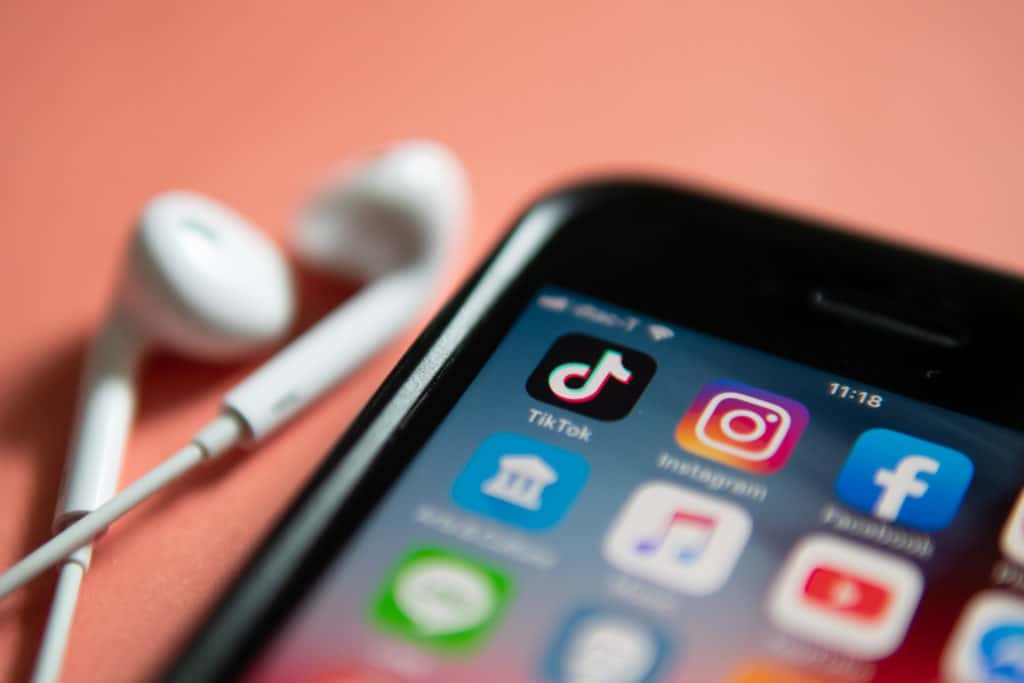How does TikTok work?

Hello, person who’s going to be, statistically speaking, an individual adult aged approximately millennial to boomer. The analytics suggest a high likelihood that you will be aware we have an app named TikTok, and also a similarly high likelihood that you are not totally sure the goals all about. Perhaps you asked someone younger in your lifetime, they usually tried to go into detail and even failed. Or perhaps you’ve heard that your new, extraordinarily popular video app is really a refreshing outlier while in the social media universe that’s genuinely fun to use. Maybe you’ll used it, but bounced straight out, confused and sapped. The newest social network TickTok is more popular each and every month https://ttmetrics.com/usa-1 already, it possesses his own celebrities who may have gathered countless subscribers. As an example, https://ttmetrics.com/HannahAlexisAnderson/5337 Fear of missing out the type of approach to describe how social media can get people to sense that most people are component of something a concert, a secret beach, a brunch that they can be not. The latest wrinkle in this idea is that often sometimes that something is usually a social media platform itself. You could possibly saw a photo of some friends on Instagram at a terrific party and wondered the reason why you weren’t there. Even so, next in the feed, you saw a weird video, watermarked by using a vibrating TikTok logo, scored that has a song you’d never heard, starring any person you’d never seen. Maybe you saw among the staggering number of ads for TikTok plastered throughout other myspace, and real life, and wondered las vegas dui attorney weren’t in that party, either, and why it seemed so far away.
It is often quite some time since the latest social app got adequate, quickly enough, to create nonusers feel they’re missing out from an experience. If you exclude Fortnite, that’s very social but also very much a casino game, one more time an app inspired such interest from folks who weren’t on it absolutely was maybe Snapchat? (Not a coincidence that Snapchat’s audience skewed very young, too.)
Although you, perhaps an anxious abstainer, may suffer perfectly secure in your choice not to sign up for that service, Snapchat has more daily users than Twitter, changed the path of its industry, and altered the way people communicate using their phones. TikTok, now reportedly 500 million users strong, is not so obvious in its intentions. But for many people no get them! Shall we?
The usual human explanation of TikTok.
TikTok can be an app in making and sharing short videos. The videos are tall, not square, like on Snapchat or Instagram’s stories, and you navigate through videos by scrolling up and down, like a feed, not by tapping or swiping side to side.
Video creators have loads of tools that they can: filters as on Snapchat (and later, everyone else); the cabability to search for sounds to attain your video. Users are also strongly encouraged to interact with users, through response videos or via duets users can duplicate videos and add themselves alongside.
Hashtags play a surprisingly large role on TikTok. In additional innocent times, Twitter hoped its users might congregate around hashtags in a very never-ending number of productive pop-up mini-discourses. On TikTok, hashtags actually exist as a genuine, functional organizing principle: not for news, as well as really anything trending elsewhere than TikTok, but for various challenges, or jokes, or repeating formats, or other discernible blobs of activity.
On this TikTok, a common song for memes is needed to convey shopping as being a outsider.
TikTok is, however, a free-for-all. You can easily make a video on TikTok, not just for as a result of tools it gives users, but due to extensive reasons and prompts it offers up you. You can make from a huge selection of sounds, from popular song clips to short moments from TV shows, YouTube videos or any other TikToks. You’ll be able to join a dare-like challenge, or be involved in a dance meme, or make a joke. Or poke fun at most of these things.
TikTok assertively answers anyone’s what should I watch that has a flood. In a similar manner, the app provides loads of answers for that paralyzing what should I post? It’s wise an endless unspooling of cloth that people, many very young, might be too self-conscious to share on Instagram, or that they can never would have come up with from the beginning without having a nudge. It can be hard to watch. It can be charming. It could be very, very funny. It’s frequently, in the text widely applied outside the platform, from people on other platforms, extremely cringe.
The history?
TikTok can appear, to a American audience, a bit like a greatest hits compilation, featuring only essentially the most engaging elements and experiences of its predecessors. This really is, with a point. But TikTok generally known as Douyin in China, where its parent company is situated must be understood as the single most popular of many short-video-sharing apps in that country. This is usually a landscape that evolved both alongside as well as arm’s length through the American tech industry Instagram, by way of example, is banned in China.
In the hood, TikTok can be a fundamentally different app than American users purchased before. It might look like its friend-feed-centric peers, and you will follow and stay followed; needless to say you can find hugely popular stars, many cultivated with the company itself. There’s messaging. Users can and use it like any other social app. But the many aesthetic and functional similarities to Vine or Snapchat or Instagram belie a core difference: TikTok is much more machine than man. In this manner, it’s from the near future or at best a future. And has now some messages for us.
Instagram and Twitter could only take us so far.
Twitter became popular as an instrument for following people and being and then other folks and expanded from there. Twitter watched what its users did featuring a original concept and formalized the conversational behaviors they invented. (See: Retweets. See again: hashtags.) Only then, and after going public, achieved it become more assertive. It made more recommendations. It started reordering users’feeds based on just what it thought they may want to see, or could have missed. Opaque machine intelligence encroached on the initial system.
This TikTok is some unlikely yet sweet comedy about kids and vaccination.
Such like happened at Instagram, where algorithmic recommendation is currently an incredibly noticeable section of the experience, and also on YouTube, where recommendations shuttle one around the working platform in new and infrequently let’s imagine surprising ways. Many might feel affronted by these assertive new automatic features, that are clearly designed to increase interaction. One might reasonably worry that it trend serves the minimum demands of your brutal attention economy which is revealing tech companies as cynical time-mongers and turning us into mindless drones.
These changes have also tended to your workplace, not less than on those terms. We sometimes do spend more time the apps as they’ve become more assertive, and less intimately human, even while we’ve complained.
What’s both crucial as well as simple to overlook about TikTok is the place it offers stepped over the midpoint between familiar self-directed feed and an event based first on algorithmic observation and inference. The most obvious clue is appropriate there if you open the app: one thing the thing is that isn’t an rss feed of the friends, but a webpage called For You. Now you have an algorithmic feed based on videos you’ve interacted with, or maybe just watched. It never has no material. It’s not, if you train so that it is, brimming with people you recognize, or things you’ve explicitly told it you would like to see. It’s filled with things which material have demonstrated you should watch, no matter what you really say you should watch.
